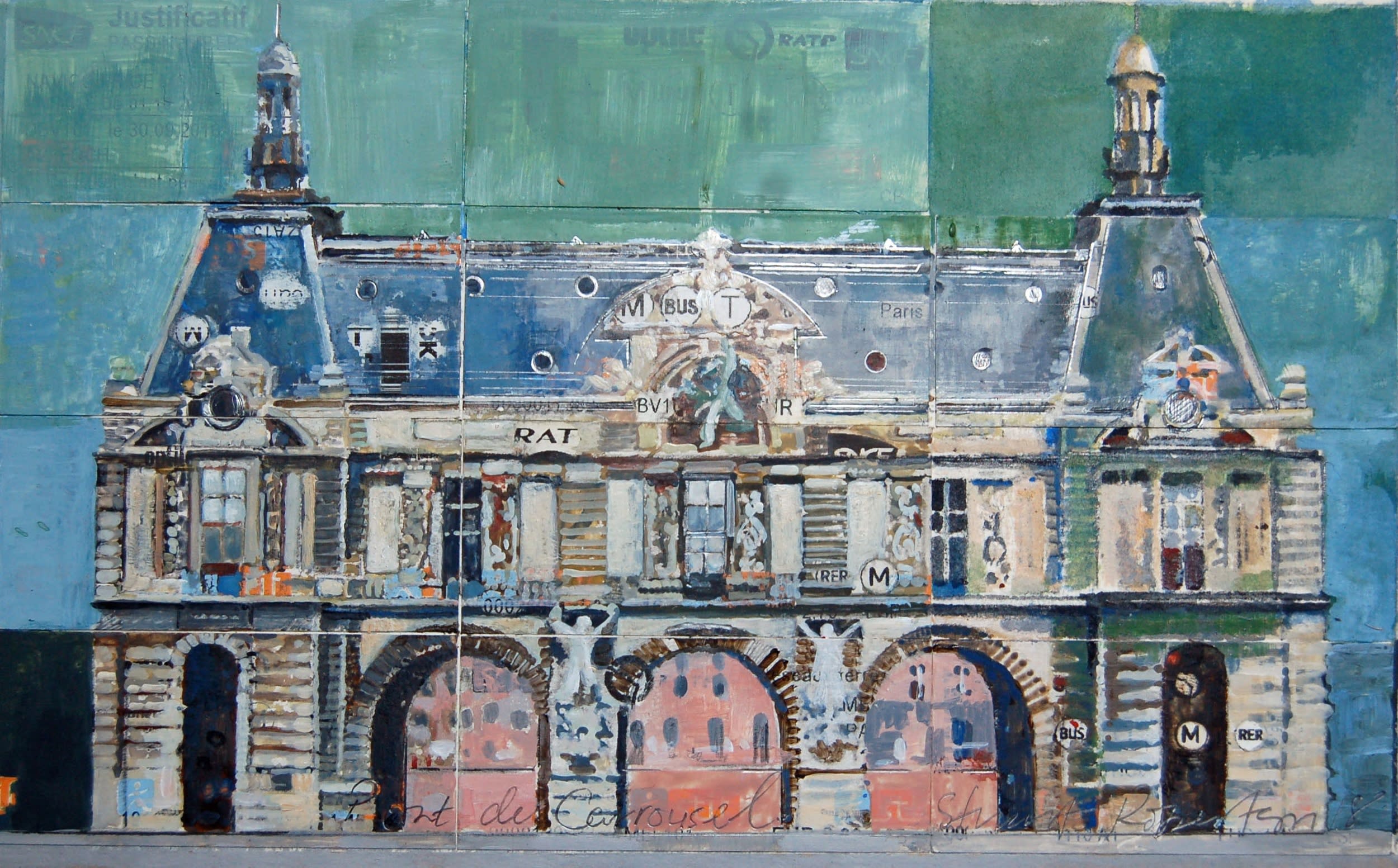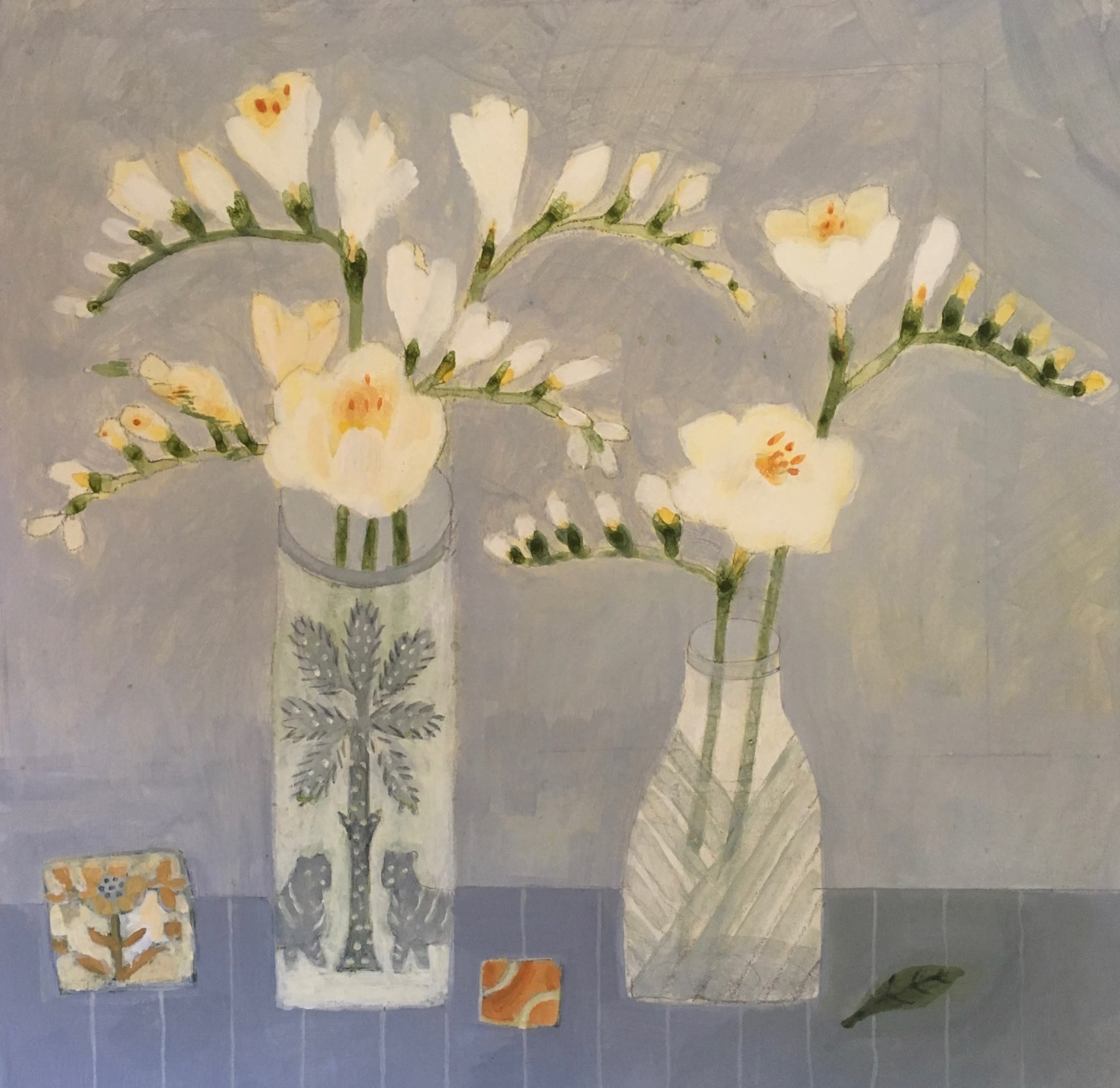Read: Straight from the artist's mouth: A guide to water-based media
Quiz: Which water-based media is for you?
Read / Watch: Lockdown Painting: In the Studio with Paul Regan
1. Forget any preconceptions about the limitations of watercolour!
The Royal Watercolour Society is no longer just about traditional watercolour. Now it includes all water-based media, including gouache, acrylic, ink and any mixture of these media.

Louvre Bridge Entrance
watercolour & collage
2. There is a limit on the maximum number of 'fully elected' members...
...meaning those who can use the designatory letters 'RWS'. Whilst only 75 members can be fully elected at any one time, the number of associate members (designatory letters 'ARWS') is unlimited! As there are currently 75 RWS members, ARWS members can only move to RWS status via the death, retirement or resignation of an existing RWS member.

RWS artists Jill Leman and Mark Raggett, President and Vice President of the
Royal Watercolour Society, respectively.
3. The RWS has only had one female president.
Amazingly, considering how many female artists have been RWS members, the current president, Jill Leman, is the first woman to hold the position since the RWS was founded in 1804.

A Magical Time
acrylic
4. Watercolour is (once again) the new modern!
Fluctuating in popularity, perhaps more than any other medium, it was regarded as well past its sell by date for much of the latter half of the 20th century. Now, because of the increasing range of media available and allowed and the diversity of the artists choosing to use it, this beautiful art form is enjoying a well-deserved renaissance.

An Army of Apple Trees, Some Snow and Setting Sun, Winter, Kent
mixed media & collage
5. The RWS shares its home, Bankside Gallery, with the Royal Society of Painter-Printmakers (RE), and has done since its opening in 1980. But that wasn't the beginning of their history together...
The Royal Watercolour Society and the Royal Society of Painter-Printmakers were both born from a feeling that the Royal Academy undervalued their respective media, and failed to show them to advantage, if at all. The two societies joined forces in exhibition rooms at 5a Pall Mall in 1889 and never looked back. In 1938 they moved to 26 Conduit Street, London W1, when the lease at 5a Pall Mall East expired and the block was redeveloped.
As the 20th century went on, property prices in the West End rose. In 1973 the Conduit Street lease was renewed for seven years but the rent was increased to £700, an unsustainable price for the two societies. A committee of Harry Eccleston, Andrew Freeth, Malcolm Fry (RWS and RE Secretary), Richard Seddon, and Rodney Millard was set up to consider the question of new premises. But as chance would have it, a fortuitous dinner invitation led to the foundation of Bankside Gallery, and the rescue of both societies.
A fundraising campaign followed along with the inevitable delays and complications involved in a major building project, but finally, in 1980, the societies were settled in their new home.

Photograph taken at the 2017 Mini Picture Show at Bankside Gallery. The annual exhibition features works by artists of the Royal Watercolour Society (RWS) and Royal Society of Painter-Printmakers (RE).
More like this on the Blog...
Read: Abstract Art in 2020: Online Panel Discussion
Read: Straight from the artist's mouth: A guide to water-based media
Quiz: Which water-based media is for you?
Read / Watch: Abstract Art: In the Studio with Lisa Traxler
Read / Watch: Lockdown Painting: In the Studio with Paul Regan
Watch: In the Studio with Bridget Moore.
Watch: In the Studio with Denis Ryan.
Watch: In the Studio with James Faure Walker.
